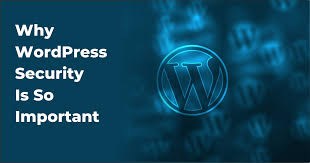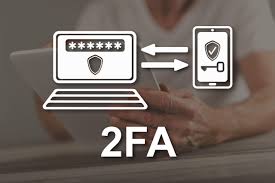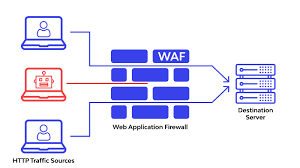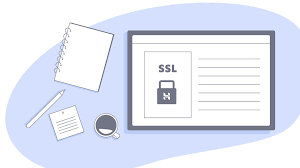secure WordPress website WordPress security, protect WordPress site, prevent hacking, WordPress firewall, website backup, security plugins, WordPress tips 2025

Table of Contents
1. Why WordPress Security Matters secure WordPress website
secure WordPress website WordPress powers over 43% of the web — making it a huge target for cybercriminals. A single successful attack can result in:
- Stolen data
- Malware installation
- Site defacement
- SEO ranking loss
- User trust issues
Whether you’re a blogger, business owner, or eCommerce entrepreneur, WordPress security isn’t optional — it’s essential.

2. Common Security Vulnerabilities in WordPress
secure WordPress website Before we jump into the solutions, let’s understand the most exploited entry points:
- Outdated plugins and themes
- Weak passwords and usernames (like “admin”)
- Insecure hosting environments
- No SSL certificate
- Lack of backups
- File permission vulnerabilities
- Brute force and DDoS attacks

3. Step-by-Step Guide to Secure Your WordPress Site
3.1 Use a Reliable Hosting Provider
Your web host is your first line of defense. Look for these features:
- Daily malware scans
- DDoS protection
- 24/7 server monitoring
- Isolated account environments
Top hosts with strong security features in 2025:
- SiteGround
- Kinsta
- WP Engine

3.2 Keep WordPress Core, Themes & Plugins Updated
Outdated software is like an open door for hackers.
Best Practices:
- Enable auto-updates for WordPress core
- Regularly update plugins/themes
- Delete unused plugins/themes completely

3.3 Use Strong Passwords & Change Default Usernames
Never use “admin” as your username — it’s the first thing bots try.
What to do:
- Use a unique username and a 12+ character password
- Use a password manager like LastPass or Bitwarden

3.4 Enable Two-Factor Authentication (2FA)
2FA requires you to enter a code sent to your phone or app after typing in your password.
Plugins to try:
- WP 2FA
- Google Authenticator
- Duo Two-Factor Authentication

3.5 Install a Security Plugin
Security plugins help automate protection. They scan for threats, monitor activity, and block malicious traffic.
Top WordPress security plugins in 2025:
- Wordfence Security
- Sucuri Security
- iThemes Security Pro

3.6 Set Up a Web Application Firewall (WAF)
A WAF blocks dangerous traffic before it reaches your site.
Recommended solutions:
- Cloudflare (Free and Paid plans)
- Sucuri Firewall
- MalCare

3.7 Use SSL Certificate (HTTPS)
SSL encrypts the connection between your website and visitors, protecting sensitive data.
How to get SSL:
- Most hosting providers offer free SSL via Let’s Encrypt
- Use plugins like Really Simple SSL if needed
Check your URL — it should begin with https://

3.8 Limit Login Attempts secure WordPress website
Hackers use brute force to guess your password. Limiting login attempts makes this harder.
Plugins that help:
- Limit Login Attempts Reloaded
- Login LockDown
- WP Limit Login Attempts

3.9 secure WordPress website Disable File Editing in Dashboard
If someone gains access to your admin panel, they can modify files directly. Disable it with this code in wp-config.php:
phpCopyEditdefine('DISALLOW_FILE_EDIT', true);
3.10 Regular Backups & Restore Points
secure WordPress website Backups ensure you can quickly restore your site after an attack.
Top backup plugins:
- UpdraftPlus
- BlogVault
- Jetpack VaultPress
Backup tips:
- Automate backups (daily or weekly)
- Store backups offsite (Dropbox, Google Drive, etc.)
4. secure WordPress website Bonus Security Tips for 2025
- Change login URL from
/wp-adminto something unique using WPS Hide Login - Disable XML-RPC unless needed — it’s a common attack vector
- Use activity logs to monitor suspicious user behavior
- Apply least privilege principle — give users only the access they need
- Scan for malware regularly using plugins or third-party tools
5. What to Do If Your WordPress Site Is Hacked secure WordPress website
secure WordPress website If you suspect your site has been compromised, follow these steps:
- Take the site offline temporarily
- Restore from a recent backup
- Scan your site using Sucuri or Wordfence
- Change all passwords (admin, FTP, database)
- Update everything
- Hire a security expert if needed
After cleanup, enhance security to avoid repeat attacks.
6. Final Thoughts
Security is a continuous process, not a one-time setup. As WordPress evolves, so do the techniques of hackers. By proactively protecting your site using the strategies above, you:
- Prevent data loss
- Maintain customer trust
- Improve SEO rankings
- Ensure site performance and uptime
secure WordPress website Invest in WordPress security now, and you’ll save countless hours — and possibly your entire online business — down the road secure WordPress website .
Ready Checklist to Secure Your WordPress Site secure WordPress website
- Strong passwords & usernames
- Updated core, plugins, themes
- Installed security plugin & WAF
- Daily backups
- SSL & 2FA enabled
- Limited login attempts
- File editing disabled
- Ongoing malware scans
